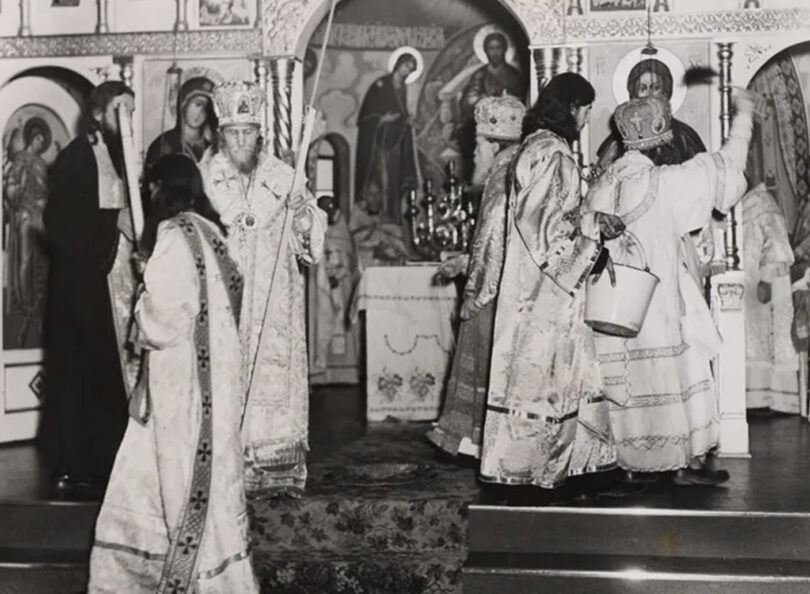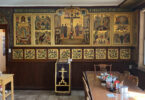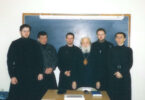Metropolitan Anastassy relocated from Europe to North America on this day in 1950.
In August of 1921, the Council of Bishops of the Serbian Orthodox Church decided to provide canonical asylum to the Russian refugee bishops. From that time, until Metropolitan Anastassy’s departure from Belgrade to the West in 1944, the Serbian Church supplied holy chrism to the ROCOR. Bishops of the Russian Church Abroad enjoyed canonical “extraterritoriality” on the territory of the Serbian Church.
In 1945, Metropolitan Anastassy succeeded in making his way to Geneva, over the protests of Swiss communists. Having performed consecrations of new bishops and established connections with the remnants of the ROCOR, Metropolitan Anastassy moved to Munich. The building that housed the ROCOR Synod still stands there.
Metropolitan Anastassy arrived in America on November 24. The next day he went to Holy Trinity Monastery in Jordanville to preside over the consecration of the cathedral church. Following the new consecrations, there were 11 hierarchs in attendance at the Council of Bishops. The rite of consecration of chrism was performed at this point in time.
His epistle to the Council demonstrates that the Russian Church Abroad’s story is part of the wider American narrative, that of a land which gives refuge to the oppressed:
“We cannot but be grateful to this magnanimous country, to which, along with vast natural expanses, God has granted the ‘breadth and space’ of a generous, hospitable heart. In it, there is room for exiles from all over the world who have been compelled to quit their native lands because of their religious or political convictions.”
At the Seventh All-American Sobor in Cleveland, OH, in 1937, the North American Metropolia decided to cease ecclesiastical communion with the ROCOR. Partially, this was done to improve relations with the Russian Church, which, in 1943, had restored the Patriarchate. Now, with the beginning of the Cold War, a relationship with the ROCOR seemed sensible to the Metropolia. This matter was reflected in the epistle:
“According to the special conditions of local communal and church life, and under the influence of certain features of the internal structure that took shape in one or the other ecclesiastical organization during the period when they were out of communion, they cannot yet be merged together as they were before 1946, but, in any case, both jurisdictions have expressed sincere goodwill for peaceful coexistence and cooperation betwixt themselves, such that any disagreements that might be encountered along the way could be resolved through a fraternal exchange of opinions between the representatives of one side or the other.”
Clearly, these were thoughts expressed by Archbishop Vitaly (Maksimenko), who was deeply saddened by the break in the relationship with the North American Metropolia. The next year, in 1951, the Kursk-Root Icon arrived in New York.
Source:
Monk Benjamin (Gomartely), “Letopis’ tserkovnykh sobytii nachinaii s 1917 goda,” [Timeline of Church Events Beginning since 1917], Part. IV Historical Studies of the Russian Church Abroad.











